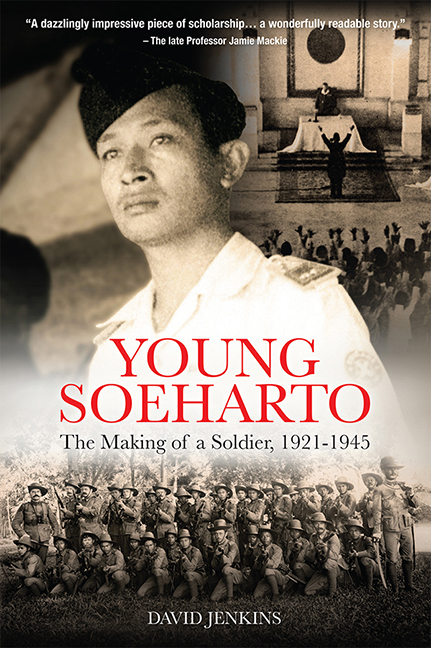Book contents
- Frontmatter
- Contents
- Foreword
- A Note on Spelling and Names
- A Note on Military Organization
- Maps
- List of Charts
- Preface
- Soeharto Family Tree
- 1 “The Sultan came to me and asked about that Family tree”
- 2 “The Cork on which the Netherlands Floats”
- 3 “They Regard Holland as a very Weak Power”
- 4 “An Invisible Motivating Force”
- 5 “What kind of Islam is this?”
- 6 “Soeharto is a Closed Book”
- 7 “I was Suited to the Disciplined life of the Military”
- 8 A Reassuringly Familiar World
- 9 A Policeman for the Japanese
- 10 An Armed Force Conjured out of Nothing
- 11 “The whole Island was Ablaze with Enthusiasm”
- 12 “Don’t make them too Strong!”
- 13 “Soeharto was a Cautious Man”
- 14 “Why did they Choose Soeharto?”
- Glossary and Abbreviations
- Notes
- Acknowledgements
- Bibliography
- Index
- About the Author
4 - “An Invisible Motivating Force”
Published online by Cambridge University Press: 09 October 2021
- Frontmatter
- Contents
- Foreword
- A Note on Spelling and Names
- A Note on Military Organization
- Maps
- List of Charts
- Preface
- Soeharto Family Tree
- 1 “The Sultan came to me and asked about that Family tree”
- 2 “The Cork on which the Netherlands Floats”
- 3 “They Regard Holland as a very Weak Power”
- 4 “An Invisible Motivating Force”
- 5 “What kind of Islam is this?”
- 6 “Soeharto is a Closed Book”
- 7 “I was Suited to the Disciplined life of the Military”
- 8 A Reassuringly Familiar World
- 9 A Policeman for the Japanese
- 10 An Armed Force Conjured out of Nothing
- 11 “The whole Island was Ablaze with Enthusiasm”
- 12 “Don’t make them too Strong!”
- 13 “Soeharto was a Cautious Man”
- 14 “Why did they Choose Soeharto?”
- Glossary and Abbreviations
- Notes
- Acknowledgements
- Bibliography
- Index
- About the Author
Summary
In 1930, Surakarta (Solo) was a small and neatly laid out court city where two very different worlds, one Javanese and ostensibly Islamic, the other Dutch and stoutly Christian, had coexisted for a century, since the end of the Java War, just as they had in Yogyakarta. At the heart of the town stood the Kraton of the seriously overweight Susuhunan (Sunan) Pakubuwono X, a monarch of intemperate habits and eccentric pursuits who had been on the throne for thirty-six years, in the course of which he acquired a consort, forty secondary wives, forty-five children and seventy grandchildren.* Pakubuwono X, who was sixty-three in 1930 and who is remembered today “as the last Surakarta king endowed with a truly regal aura”, was held in awe by many Javanese. It was said that his mystical eye could see events which occurred anywhere in his kingdom and he was known “to converse with all animals in their respective languages”. He was best known, however, for his capacity to harness the power of magic and for his exceptional skill at prophecy, gifts which he was said to have inherited from his forebears.
Like his nine predecessors and his distant relatives in Yogyakarta, Pakubuwono X had no political or military power, this being firmly in the hands of the Dutch governor, a man who towered over him when the two appeared together on high occasions of state, the former dressed in great finery, his blue velvet jacket bedecked with honorary medals the size of small plates and worn over a batik kain, his left hand clutching the elbow of the governor in the approved manner. But the Sunan was “tremendously popular and nettled the Dutch through a series of royal progresses in which he was lionised by his people as if he were in fact the island's true ruler.” On these journeys, His Royal Highness was in the habit of tossing coins as alms to his appreciative subjects from the window of his automobile, a monarchical prerogative which, as we have seen, Soeharto was to revive when he dedicated the refurbished gravesite of Mangkunegoro I and others from that court in 1971, only three years into his presidency.
- Type
- Chapter
- Information
- Young SoehartoThe Making of a Soldier, 1921–1945, pp. 61 - 77Publisher: ISEAS–Yusof Ishak InstitutePrint publication year: 2021

